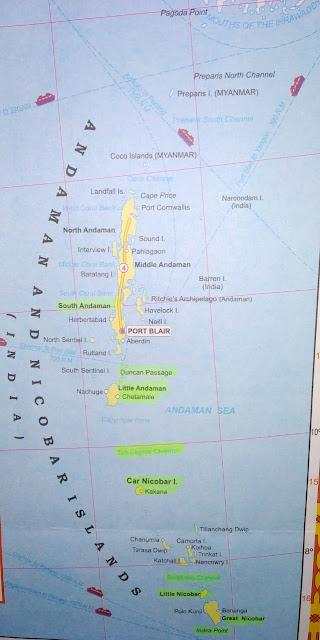समास का शाब्दिक अर्थ है छोटा करना। जब दो या दो से अधिक शब्दों का सार्थक मेल होता है और एक नया शब्द बनता है इस प्रक्रिया को समास कहते है।
समास में पदों की संख्या होती है
दो पद (शब्द) होते हैं।
1 . पूर्व पद
2. उत्तर पद
Example - देश + भक्त = देशभक्त
समास-विग्रह- समस्त पद के सभी पद अलग-अलग करने की क्रिया समास विग्रह कहलाती है।
Example - माता - पिता = माता और पिता
समास के भेद (प्रकार) - समास के छः भेद हैं.
1. अव्ययीभाव - पूर्व पद प्रधान होता है।
प्रतिदिन - प्रत्येक दिन
भरपेट- पेट भरकर
यथाविधि- विधि के अनुसार
यथाशक्ति - शक्ति के अनुसार
यथासामर्थ्य - सामर्थ्य के अनुसार
रातोंरात - रात ही रात में
निडर - दर से रहित
2. तत्पुरुष - उत्तर पद प्रधान होता है।
तत्पुरुष समास के भेद- विभक्तियों के नाम के अनुसार तत्पुरुष समास के छह भेद हैं-
1.कर्म तत्पुरुष - कर्म कारक की विभक्ति को का लोप होता है।
2. करण तत्पुरुष -करण कारक की विभक्ति से , केद्वारा का लोप होता है।
3. संप्रदान तत्पुरुष - संप्रदान कारक की विभक्ति के लिए का लोप होता है।
4.अपादान तत्पुरुष - अपादान कारक की विभक्ति से ( पृथक होने का भाव ) का लोप होता है।
5.संबंध तत्पुरुष - संबंध कारक की विभक्ति का , के , की का लोप होता है।
6.अधिकरण तत्पुरुष - अधिकरण कारक की विभक्ति में , पर का लोप होता है।
1. कर्म
तत्पुरुष -
कर्म कारक की
विभक्ति को का लोप
होता है।
Ex-
1. सिरतोड़ - सिर को तोड़नेवाला
2. ग्रामगत - ग्राम को गया हुआ
3. जेबकतरा - जेब को कतरने वाला
4. गगनचुंबी - गगन को चूमने वाला
5. स्वर्गप्राप्त - स्वर्ग को प्राप्त
6. जनप्रिय - जान को प्रिय
2. करण तत्पुरुष - करण कारक की विभक्ति 'से', 'के द्वारा' का लोप हो जाता है।
Ex –
1. रसभरा - रस से भरा
2. रेखांकित - रेखा से अंकित
3. मनचाहा – मन से चाहा
4. शोकाकुल – शोक से आकुल
5 . भुखमरा - भूख से मरा
6. आंखोंदेखी - आँखों से देखि
7 . प्रेमातुर - प्रेम से आतुर
3. सम्प्रदान तत्पुरुष – संप्रदान कारक की विभक्ति 'के लिए' लुप्त हो जाती है।
Ex –
1. हथकड़ी - हाथ के लिए कड़ी
2. गौशाला - गौ के लिए शाला
3. देवालय - देव के लिए आलय
4. स्नानघर - स्नान के लिए घर
5. विद्यालय - विद्या के लिए आलय
6. परीक्षा -केंद्र - परीक्षा के लिए केंद्र
4. अपादान तत्पुरुष – अपादान कारक की विभक्ति 'से' (अलग होने का भाव) लुप्त हो जाती है।
Ex –
1. धनहीन - धन से हीन
2. पापमुक्त - पाप से मुक्त
3. नेत्रहीन - नेत्र से हीन
4. भयभीत – भय से भीत
5.आवरणहीन - आवरण से हीन
5. सम्बन्ध तत्पुरुष – संबंध कारक की विभक्ति 'का', 'के', 'की' लुप्त हो जाती है।
Ex –
1. सेनापति - सेना का पति
2. राजपुत्र - राजा का पुत्र
3. शिवालय - शिव का आलय
4. गृहस्वामी - गृह का स्वामी
5. क्षमादान - क्षमा का दान
6. सीमारेखा - सीमा की रेखा
7. प्रजापति - प्रजा का पति
8. मृत्युदंड - मृत्यु का दंड
9. राजसभा - राजा की सभा
6. अधिकरण तत्पुरुष – अधिकरण कारक की विभक्ति 'में', 'पर' लुप्त जो जाती है।
Ex –
1. पुरुषोत्तम - पुरुषों में उत्तम
2. दानवीर - दान में वीर
3. गृहप्रवेश - गृह में प्रवेश
4. नरोत्तम - नरों में उत्तम
5.मृत्युंजय - मृत्यु पर जय
6.जलमग्न - जल में मग्न
7.सिरदर्द - सर में दर्द
3. द्विगु - पूर्व पद संख्यावाचक होता है।
Examples -
नवरात्र - नव रात्रियों का समूह
चौराहा - चार राहों का समूह
तिरंगा - तीन रंगों का समाहार
पंचामृत - पांच अमृतों का समूह
चौगुनी - चार गुनी
सप्ताह- सात दिनों का समूह
4. द्वन्द्व - दोनों पद प्रधान होते है। ( विग्रह करने पर ' या ' , ' अथवा ' , ' और ' , एवं आये तो द्वन्द्व समास होता है।
Examples -
देश - विदेश = देश और विदेश
भाई-बहन = भाई और बहन
अमीर - गरीब = अमीर और गरीब
नर-नारी = नर और नारी
ठंडा – गर्म = ठंडा या गर्म
5. बहुव्रीहि - कोई पद प्रधान नहीं होता है , दो पद मिलकर किसी तीसरे पद की और संकेत करते है।
Examples -
6. कर्मधारय - जिस समास का उत्तरपद प्रधान हो और पूर्वपद व उत्तरपद में विशेषण-विशेष्य अथवा उपमान-उपमेय का संबंध हो।
Examples -
चरणकमल - चरण उपमेय है , कमल उपमान है।
चन्द्रमुख - चंद्र (उपमान) , मुख (उपमेय)
नीलगगन में – नील (विशेषण) , गगन (विशेष्य)
Some other examples-
How to recognize - विग्रह करने पर दोनों पदों के बीच में कुछ शब्द आते है जैसे -
है जो , के सामान etc.
परमानन्द - परम है जो आनंद
नीलकंठ - नीला है जो कंठ
प्राणप्रिया - प्राणों के सामान प्रिय
अंधकूप - अँधा है जो कोप
महावीर - महान है जो वीर
शचिस्मिता - पवित्र है जिसकी मुस्कान
Thanks
Like , Share and Subscribe
समास में पदों की संख्या होती है
दो पद (शब्द) होते हैं।
1 . पूर्व पद
2. उत्तर पद
Example - देश + भक्त = देशभक्त
समास-विग्रह- समस्त पद के सभी पद अलग-अलग करने की क्रिया समास विग्रह कहलाती है।
Example - माता - पिता = माता और पिता
समास के भेद (प्रकार) - समास के छः भेद हैं.
1. अव्ययीभाव - पूर्व पद प्रधान होता है।
प्रतिदिन - प्रत्येक दिन
भरपेट- पेट भरकर
यथाविधि- विधि के अनुसार
यथाशक्ति - शक्ति के अनुसार
यथासामर्थ्य - सामर्थ्य के अनुसार
रातोंरात - रात ही रात में
निडर - दर से रहित
2. तत्पुरुष - उत्तर पद प्रधान होता है।
तत्पुरुष समास के भेद- विभक्तियों के नाम के अनुसार तत्पुरुष समास के छह भेद हैं-
1.कर्म तत्पुरुष - कर्म कारक की विभक्ति को का लोप होता है।
2. करण तत्पुरुष -करण कारक की विभक्ति से , केद्वारा का लोप होता है।
3. संप्रदान तत्पुरुष - संप्रदान कारक की विभक्ति के लिए का लोप होता है।
4.अपादान तत्पुरुष - अपादान कारक की विभक्ति से ( पृथक होने का भाव ) का लोप होता है।
5.संबंध तत्पुरुष - संबंध कारक की विभक्ति का , के , की का लोप होता है।
6.अधिकरण तत्पुरुष - अधिकरण कारक की विभक्ति में , पर का लोप होता है।
Ex-
1. सिरतोड़ - सिर को तोड़नेवाला
2. ग्रामगत - ग्राम को गया हुआ
3. जेबकतरा - जेब को कतरने वाला
4. गगनचुंबी - गगन को चूमने वाला
5. स्वर्गप्राप्त - स्वर्ग को प्राप्त
6. जनप्रिय - जान को प्रिय
2. करण तत्पुरुष - करण कारक की विभक्ति 'से', 'के द्वारा' का लोप हो जाता है।
Ex –
1. रसभरा - रस से भरा
2. रेखांकित - रेखा से अंकित
3. मनचाहा – मन से चाहा
4. शोकाकुल – शोक से आकुल
5 . भुखमरा - भूख से मरा
6. आंखोंदेखी - आँखों से देखि
7 . प्रेमातुर - प्रेम से आतुर
3. सम्प्रदान तत्पुरुष – संप्रदान कारक की विभक्ति 'के लिए' लुप्त हो जाती है।
Ex –
1. हथकड़ी - हाथ के लिए कड़ी
2. गौशाला - गौ के लिए शाला
3. देवालय - देव के लिए आलय
4. स्नानघर - स्नान के लिए घर
5. विद्यालय - विद्या के लिए आलय
6. परीक्षा -केंद्र - परीक्षा के लिए केंद्र
4. अपादान तत्पुरुष – अपादान कारक की विभक्ति 'से' (अलग होने का भाव) लुप्त हो जाती है।
Ex –
1. धनहीन - धन से हीन
2. पापमुक्त - पाप से मुक्त
3. नेत्रहीन - नेत्र से हीन
4. भयभीत – भय से भीत
5.आवरणहीन - आवरण से हीन
5. सम्बन्ध तत्पुरुष – संबंध कारक की विभक्ति 'का', 'के', 'की' लुप्त हो जाती है।
Ex –
1. सेनापति - सेना का पति
2. राजपुत्र - राजा का पुत्र
3. शिवालय - शिव का आलय
4. गृहस्वामी - गृह का स्वामी
5. क्षमादान - क्षमा का दान
6. सीमारेखा - सीमा की रेखा
7. प्रजापति - प्रजा का पति
8. मृत्युदंड - मृत्यु का दंड
9. राजसभा - राजा की सभा
6. अधिकरण तत्पुरुष – अधिकरण कारक की विभक्ति 'में', 'पर' लुप्त जो जाती है।
Ex –
1. पुरुषोत्तम - पुरुषों में उत्तम
2. दानवीर - दान में वीर
3. गृहप्रवेश - गृह में प्रवेश
4. नरोत्तम - नरों में उत्तम
5.मृत्युंजय - मृत्यु पर जय
6.जलमग्न - जल में मग्न
7.सिरदर्द - सर में दर्द
3. द्विगु - पूर्व पद संख्यावाचक होता है।
Examples -
नवरात्र - नव रात्रियों का समूह
चौराहा - चार राहों का समूह
तिरंगा - तीन रंगों का समाहार
पंचामृत - पांच अमृतों का समूह
चौगुनी - चार गुनी
सप्ताह- सात दिनों का समूह
4. द्वन्द्व - दोनों पद प्रधान होते है। ( विग्रह करने पर ' या ' , ' अथवा ' , ' और ' , एवं आये तो द्वन्द्व समास होता है।
Examples -
देश - विदेश = देश और विदेश
भाई-बहन = भाई और बहन
अमीर - गरीब = अमीर और गरीब
नर-नारी = नर और नारी
ठंडा – गर्म = ठंडा या गर्म
छल – कपट - छल और कपट
5. बहुव्रीहि - कोई पद प्रधान नहीं होता है , दो पद मिलकर किसी तीसरे पद की और संकेत करते है।
Examples -
दशानन - दस है आनन जिसके
निशाचर - निशा में विचरण करने वाला
महात्मा - महान जय आत्मा जिसकी
वीणापाणि - वीणा है जिसके हाँथ में
मोदकप्रिय - मोदक है प्रिय जिसको
6. कर्मधारय - जिस समास का उत्तरपद प्रधान हो और पूर्वपद व उत्तरपद में विशेषण-विशेष्य अथवा उपमान-उपमेय का संबंध हो।
Examples -
चरणकमल - चरण उपमेय है , कमल उपमान है।
चन्द्रमुख - चंद्र (उपमान) , मुख (उपमेय)
नीलगगन में – नील (विशेषण) , गगन (विशेष्य)
Some other examples-
How to recognize - विग्रह करने पर दोनों पदों के बीच में कुछ शब्द आते है जैसे -
है जो , के सामान etc.
परमानन्द - परम है जो आनंद
नीलकंठ - नीला है जो कंठ
प्राणप्रिया - प्राणों के सामान प्रिय
अंधकूप - अँधा है जो कोप
महावीर - महान है जो वीर
शचिस्मिता - पवित्र है जिसकी मुस्कान
Thanks
Like , Share and Subscribe


